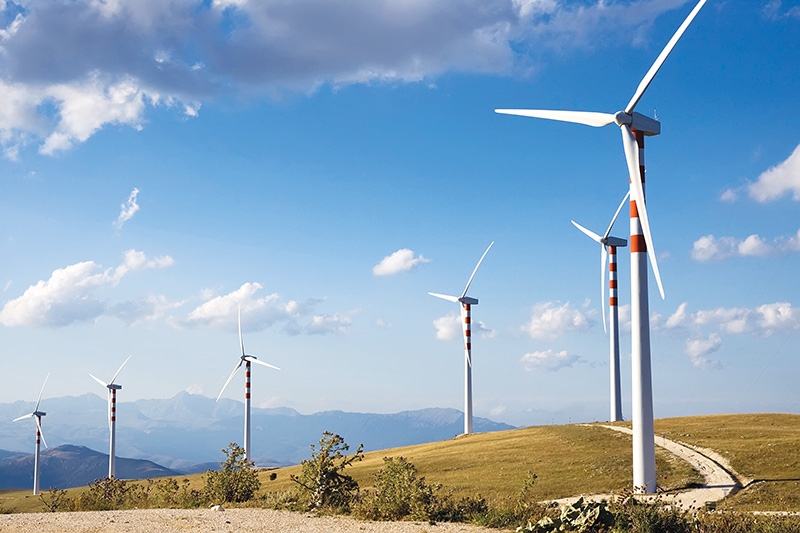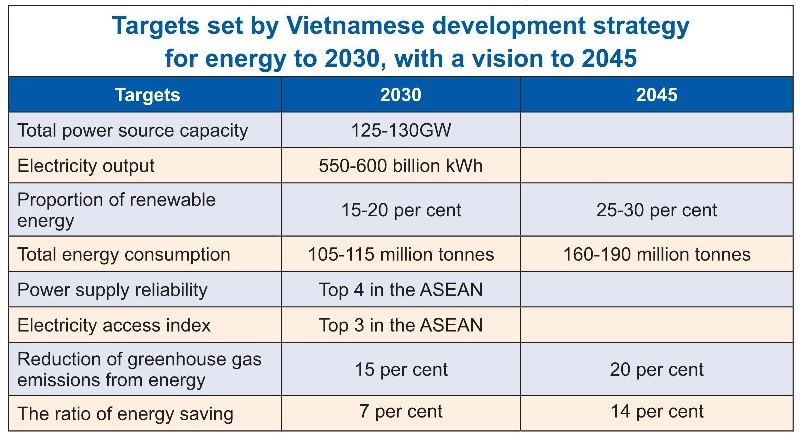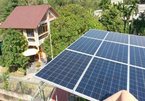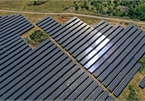 |
|
The country is to prioritise both wind and solar energy, and encourage deep investment in the sector, among others.
|
Under the Politburo’s recently-enacted Resolution No.55 NQ/TW on the country’s development strategy for energy over the next 10 years and with a vision towards 2045, targets have been set for sufficient and stable supply energy with reasonable prices, as well as accelerated development of a comprehensive, competitive, and transparent energy market, and diversified ownership and business models.
Doan Van Binh, director of the Institute of Energy and Science at the Vietnam Academy of Science and Technology, said that since implementing 2007’s Resolution No.18 NQ/TW, which had a vision towards 2050, specific goals have been reached. However, the international and domestic context requires an energy strategy with breakthrough solutions that meet the country’s new development and integration requirements. “The new resolution played an important role as it pointed out weakness during the past and the reason for these. But new situations force us to restructure,” said Binh.
 |
Vietnam’s electricity sector requires new investments of about $10 billion annually frontloaded through 2030, higher than the average of $8 billion for the 2011–2015 period. Meanwhile, the envisaged expansion of the gas sector calls for an accumulated investment of around $20 billion between 2015 and 2035.
Moving in line with government’s strategy to developing energy in order to meet socio-economic growth’s demand is inevitable. However, energy development must be consistent with energy security and environmental protection, the resolution stressed. It encourages and creates conditions for all sectors, especially the private sector, to take part in energy development and remove monopolies and unfair competition in the energy sector.
In addition, the resolution points to actions including “studying and finalising financial mechanisms and raising special capital for investment in the development of the electricity industry”. The document further notes accelerating the roadmap for implementation of the competitive electricity market; the mechanism of direct power purchase agreement (DPPA) and sale contracts between producers and consumers; the bidding mechanism; auction of appropriate power supply (especially in the projects of investment in renewable energy and new energies); and transparent power purchase price.
“There is a mechanism to encourage attraction of non-state capital in construction investment into the national electricity transmission system,” the resolution read.
Industry insiders said that when the new strategy is in force, Vietnam is likely to see an increased investment inflow, especially from major players including Thailand, Japan, South Korea, Singapore, the European Union, and the United States.
In a fresh development, more international groups are waiting for Vietnam’s DPP mechanism including ABB. Especially, the private sector could see more chances to invest into the national electricity transmission system. These new points came as Vietnam is faced with challenges to ensure energy while also complying with the government’s objectives of reducing greenhouse gas emissions by promoting renewable energy and energy-efficient technologies.
Elsewhere, some critical projects involving the Power Development Master Plan VII for the 2011-2020 period with a vision towards 2030 (PDP7) have been delayed and could lead to shortfall of energy. The recent hot development of renewable energy thanks to the feed-in tariff (FiT) is putting pressure on transmission lines and the grid that has been slower to develop.
Regarding construction of a regulatory and permitting environment that attracts private sector investment in clean energy generation and energy efficiency, John Rockhold, head of the Vietnam Business Forum’s Power and Energy Working Group said, “Ultimately, these efforts should lead to a decline in investor risk and the ability to decrease FiTs as renewable energy projects become simpler and more profitable.
Additionally, definitive regulatory frameworks for floating solar, battery energy storage systems, offshore wind, and access to clean energy by DPPAs will unlock a much greater potential for renewable energy projects.”
Franz Gerner, the World Bank’s lead energy economist, previously said that there has been large interest from private investors to participate in the vastly-growing energy market in Vietnam, especially in renewables. They are willing to invest as long as the projects are well-structured and bankable.
“What investors need is a transparent and stable regulatory environment which incorporates a proper risk-sharing mechanism among all parties,” Gerner said.
Currently, the Global Infrastructure Facility’s Governing Council, along with the World Bank, is working with the Vietnamese government on a solar pilot auction programme that will help to address Vietnam’s increased demand for energy and promote inclusive growth by strengthening the enabling environment for the private sector.
The programme, implemented by the Ministry of Industry and Trade, is part of the government’s broader efforts to accelerate investments in energy efficiency and renewable energy to increase the country’s diversification of electricity generation and reduce CO2 emissions.
Vietnam has been extremely successful in exploring its domestic gas, coal, and hydropower reserves, and currently has a high share of renewables in its overall energy mix, according to Gerner from the World Bank. However, domestic energy resources are limited, and Vietnam will increasingly rely on imported energy sources to meet its fast-growing domestic energy needs.
The Politburo’s Resolution 55 places high priority on fast and sustainable energy development, aiming to increase share of renewable energy sources in total primary energy production to 15-20 per cent by 2030, and 25-30 per cent by 2045. More mechanisms and policies will be developed to encourage investment in renewable energy and establish a suitable fossil fuel reduction plan.
Vietnam will now prioritise wind and solar power, and encourage investment in power plants using urban waste, biomass, and solid waste in parallel with environmental protection and the circular economy, while reducing the proportion of coal-fired power properly.
Alongside that, the resolution also stressed on developing fast gas-fired electricity using liquefied natural gas (LNG), making electricity and gas gradually become an important power supply, supporting the regulation of the system. Furthermore, it calls for oil refineries to meet at least 70 per cent of domestic demand for refined petro products. It also touches on developing infrastructure to be able import eight billion cubic metres of LNG annually by 2030.
Digital transformation will also be accelerated in the energy sector to gradually master modern technologies for production of energy equipment. VIR
Nguyen Thu

Renewable energy poised to attract private investors: VBF
An energy strategy that focuses on renewables, natural gas, energy efficiency and battery storage will attract private sector investment, the Vietnam Business Forum (VBF) said in a report.

Strategy aims to ensure national energy security
The National Energy Development Strategy by 2030, with vision to 2045 aims to ensure national energy security, which serves as a foundation for growth.
 Vietnam has enacted its strategic orientations for energy development through to 2030 and with a vision for the next quarter of a century, encouraging more of the private sector to develop for the future, and ensuring energy security.
Vietnam has enacted its strategic orientations for energy development through to 2030 and with a vision for the next quarter of a century, encouraging more of the private sector to develop for the future, and ensuring energy security.